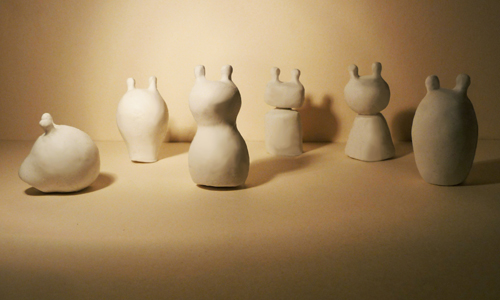Maria Chiara Toncich
produce your own energy!
The human body is rich source of expendable energy. Through their moods and behaviours the Famfizzys show children the energy they produce as they walk.

By moving, the body produces energy
goal
The child must take care of his Famfizzy puppet in order to keep it alive and healthy. While looking after it he keeps track of his bodily activity day by day. He becomes conscious of energy and its costs. The aim is to give a visualization of electricity.

A device embedded in the child’s shoes turns the mechanical stress into electricity. The shoes communicate with the puppet, which expresses how and how much energy has been saved
interactions
The Famfizzys communicate with humans and with each other through their eyes, feet and antennas.
eyes
… express the amount of energy left in the battery. They can express six moods: almost dead, tired, calm, happy, excited, irritated. The first indicates that the battery will soon run out, the second that there is a bit of energy left, and so on. When the puppet is excited or irritated the battery is full, but irritated means the Famfizzy wants a new empty battery, because the current one has been full for too long and is losing energy.
almost dead tired
calm happy
excited irritated
feet
… give an immediate feedback of movement. As the child walks the lowest part of the body start flashing. As the child increases speed, the light flashes faster.
adagio allegro
forte fortissimo
antennas
… are how Famfizzys interact with each other.
almost dead + excited
report
The project came out reflecting the role of the interaction designer regarding our historical situation. We are in the middle of a global economic and overall environmental crisis, which is very grave. In this context, the job of the designer, who develops services or objects for the future, must consider this reality.
The introduction is a briefly description of the crisis and the climate changing. Especially the third chapter is divided in different main researches: into human-powered generation of electricity, into visual systems for communicating emotions, and the possible development of the electronics and software needed to bring the Famfizzys to life. The second half of the book describes the whole design process from the early investigations to the final Famfizzys.


